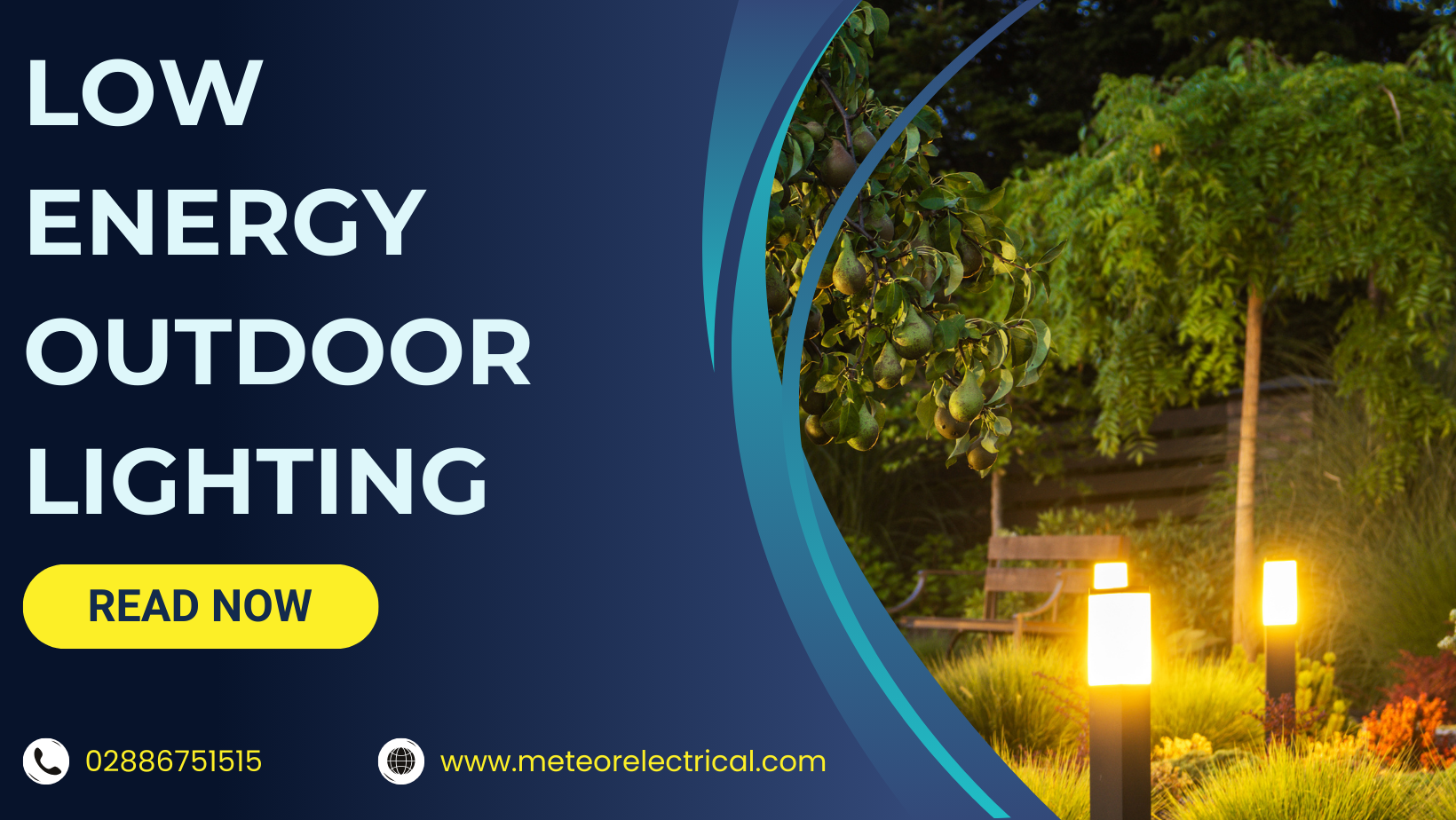Low Energy Outdoor Lighting
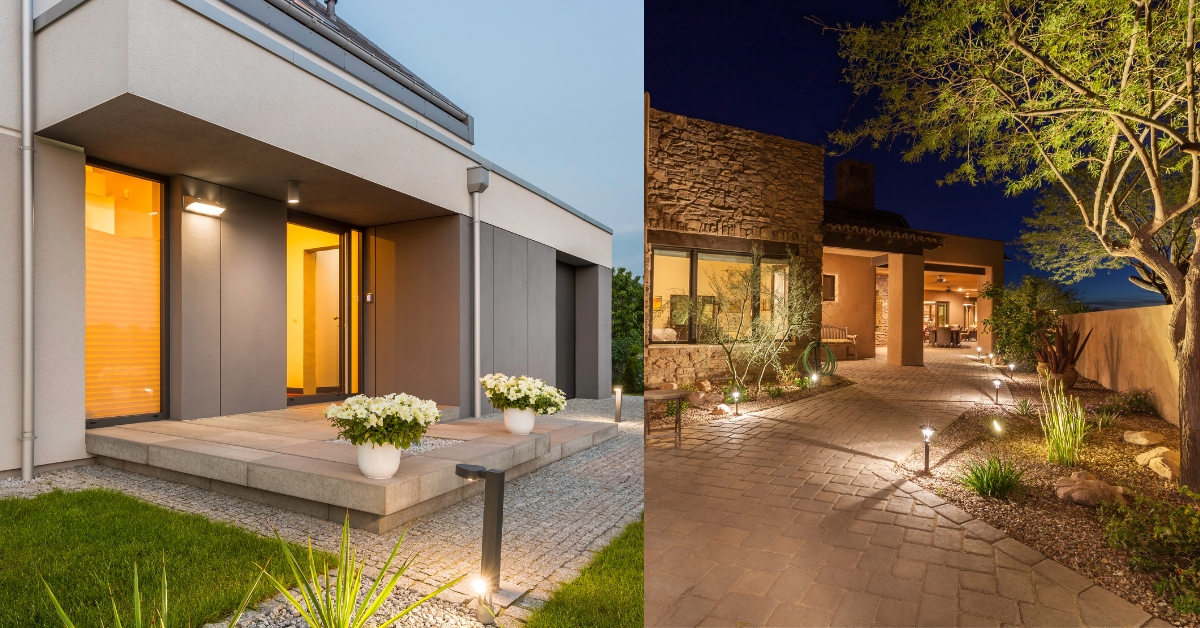
Homeowners dedicate substantial time and effort to making their homes look their best—both inside and out. Whether it’s adding a fresh coat of paint or enhancing landscaping, these improvements play a key role in boosting your home’s kerb appeal. One way to truly elevate your home's exterior while also saving on energy costs is by investing in low-energy outdoor lighting.
Unfortunately, many outdoor lights consume a lot of energy, but energy-efficient outdoor lighting offers the perfect solution. These innovative luminaries provide significant energy savings without sacrificing brightness or style. Let's dive into everything you need to know about transforming your outdoor space with low-energy lighting.
What is Outdoor Lighting?
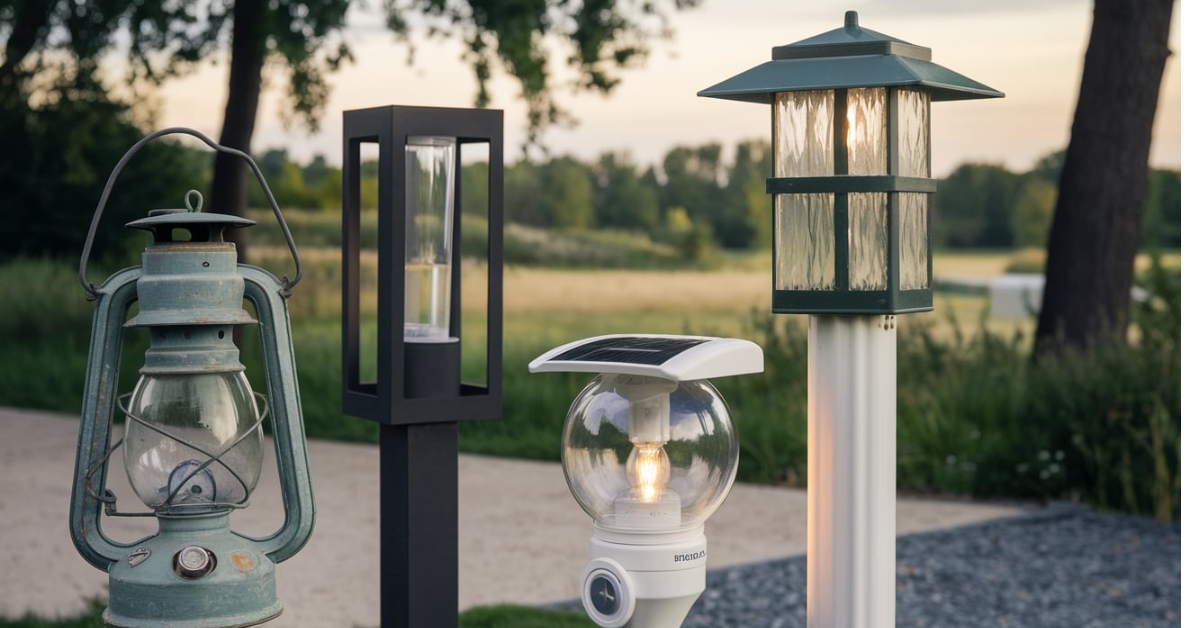
Before exploring energy-efficient options, it's essential to understand the basics of outdoor lighting. These lights are specifically designed for exterior use, meaning they can withstand harsh weather conditions, are dustproof, and offer longevity and durability.
Besides illuminating your space, outdoor lighting enhances security, especially when equipped with motion sensors. These sensors provide an added layer of safety, activating lights only when needed, and saving energy in the process. Read more about the benefits of motion sensor lighting here.
When designing your outdoor lighting scheme, it's crucial to ensure a cohesive look that matches your indoor lighting design. This creates a seamless aesthetic that enhances the overall appearance of your property. If you're looking for some of the finest outdoor lighting solutions, visit Meteor Electrical's outdoor lighting range.
Types of Outdoor Lighting Fixtures
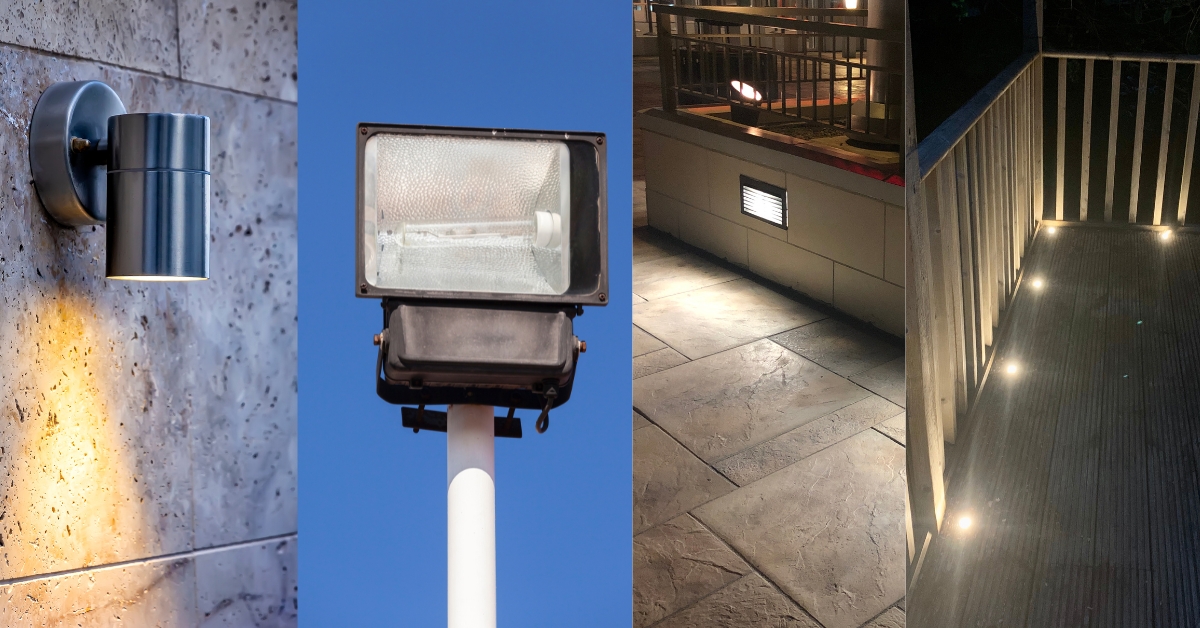
Outdoor lighting comes in a variety of styles, and each serves a specific purpose in improving your outdoor space. Here are a few common types of outdoor lighting fixtures you can explore:
- Wall Lights: Perfect for lighting up entrances or garden walls, wall lights provide both function and form by illuminating dark corners and adding an elegant design element.
- Floodlights: Great for large areas, floodlights provide powerful illumination and are often used for security purposes or to highlight focal points like trees or architectural features.
- Pathway Lights: As the name suggests, these lights illuminate walkways, driveways, or garden paths, adding safety and charm to your outdoor area.
- Deck and Step Lighting: Ideal for highlighting steps, decks, and other uneven surfaces, these lights ensure safety while contributing to the overall design.
Each of these options can be energy-efficient, with LED and low-energy versions available, ensuring that you save on electricity without compromising on aesthetics or performance.
How to Start Your Outdoor Lighting Design?
Once you understand the role of outdoor lighting, it’s time to start planning your design. The first step is to choose fixtures that complement your property’s design. Whether you have a sleek, modern home or prefer a more traditional look, there's an outdoor lighting fixture that fits your aesthetic.
Brightness is another crucial factor. Whether you're lighting a path, enhancing security, or creating a dramatic effect for your garden, the right brightness level can transform your outdoor space. Well-lit pathways, for example, not only improve safety for visitors but also add a touch of elegance.
Planning your lighting design is about more than just choosing fixtures; you need to consider the overall layout of your outdoor space and how lighting will enhance it. Think about the areas that need illumination—entrances, walkways, driveways, or garden features—and decide on a balanced lighting plan. Avoid over-lighting as this can cause glare and create an unattractive environment. Instead, focus on layering the light to create depth and visual interest.
Explore this guide for more tips on planning a perfect outdoor lighting design.
Credit: Backyard Design Guy - Outdoor Living
Why Low-Energy Outdoor Lighting Matters
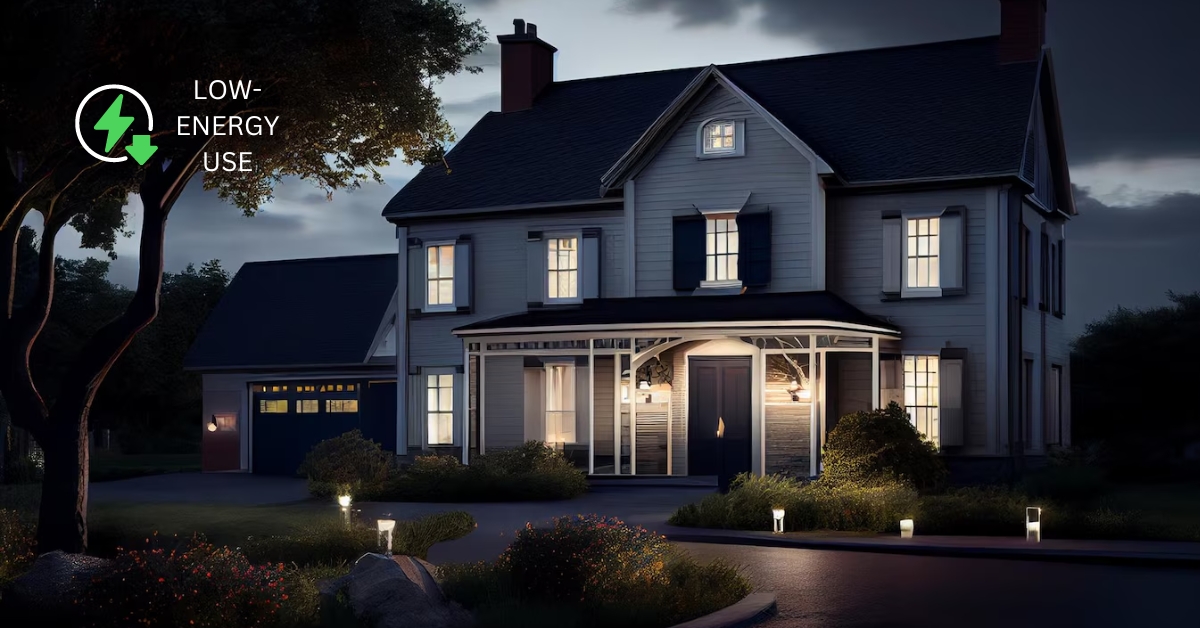
With the rising cost of energy, it's essential to look for lighting solutions that save on energy bills without compromising on performance. This is where low-energy outdoor lighting shines. These fixtures use far less energy while delivering the same, if not better, brightness than traditional lights.
A low-energy light, such as an LED, consumes as little as 6 watts while producing exceptional illumination. Additionally, energy-efficient lights are long-lasting, helping you reduce maintenance and replacement costs over time. For more insight into the benefits of low-energy lighting, visit this Energy Saving Trust resource.
By choosing low-energy outdoor lighting, you’re not only cutting down your electricity costs but also reducing your carbon footprint. Lighting accounts for nearly 5% of global CO2 emissions, according to the International Energy Agency, so transitioning to energy-efficient outdoor fixtures is a step toward creating a more sustainable future.
Benefits of Low-Energy LED Outdoor Lighting
If you’re serious about reducing your energy consumption, LED lights are an excellent choice. LED bulbs are known for their energy efficiency and durability, making them a popular option for both residential and commercial outdoor lighting applications.
LED lights use 90% less energy compared to traditional incandescent or halogen bulbs, significantly reducing energy consumption while providing brilliant illumination. The secret lies in the structural design of LEDs, which minimises heat emissions and converts energy directly into light. This makes them not only more efficient but also safer, as there's less risk of overheating.
Another key advantage of LED lighting is its long lifespan. A well-maintained LED light can last up to 25 times longer than traditional bulbs, ensuring you won’t need frequent replacements.
Beyond the financial and environmental benefits, LED lighting offers a range of design options. You can find them in a variety of shapes, sizes, and colours, allowing for greater flexibility when designing your outdoor space. For example, you can use warm-coloured LEDs to create a cosy ambiance in your garden or opt for bright white lights for pathways and security purposes.
How Do LED Outdoor Lights Compare to Halogen Lamps?
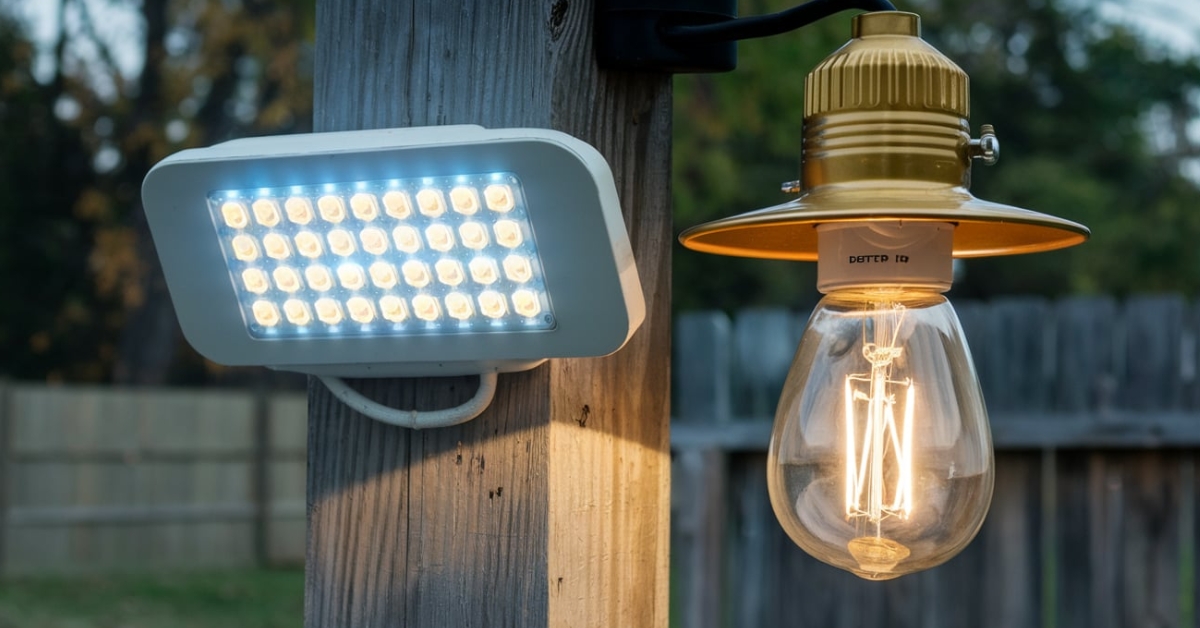
While halogen lamps are widely used for outdoor lighting, they are far less efficient compared to LEDs. Here's how these two lighting options stack up:
- Brightness: Halogen lamps can produce more initial brightness, but they degrade quickly over time. LEDs, on the other hand, provide consistent brightness for years while using far less energy.
- Structural Differences: Halogen lamps rely on a combination of metals (including mercury) within their structure, which increases the risk of environmental hazards if the lamp breaks. LEDs, however, are solid-state devices that are more environmentally friendly and easier to recycle.
- Operation Efficiency: LEDs have a near-instant on/off feature and don’t require a warm-up period, unlike halogen lamps, which can take several minutes to fully illuminate. This instant illumination is particularly beneficial for security lighting.
- Durability: LEDs are built to last, reducing the need for frequent replacements. Halogen lights, on the other hand, experience faster wear and tear, leading to increased maintenance.
In summary, LED outdoor lighting far outperforms halogen lamps in terms of efficiency, durability, and safety. For environmentally conscious homeowners, switching to LED outdoor lighting is the ideal solution.
Environmental Benefits of Low-Energy Lighting
One of the most significant reasons to switch to low-energy outdoor lighting is the positive environmental impact. Traditional light bulbs, such as incandescents and halogens, contain harmful chemicals like mercury, which can contaminate soil and water when disposed of improperly. In contrast, LEDs are free from toxic chemicals and are 100% recyclable.
By using energy-efficient outdoor lighting, you also contribute to reducing greenhouse gas emissions. Lower energy consumption means less demand on power plants, which in turn reduces the amount of CO2 released into the atmosphere. According to a United Nations Environment Programme, the widespread adoption of energy-efficient lighting could reduce global energy demand by up to 10%.
Credit: CircuitBread
Discover the Different Types of Outdoor Lighting Fixtures
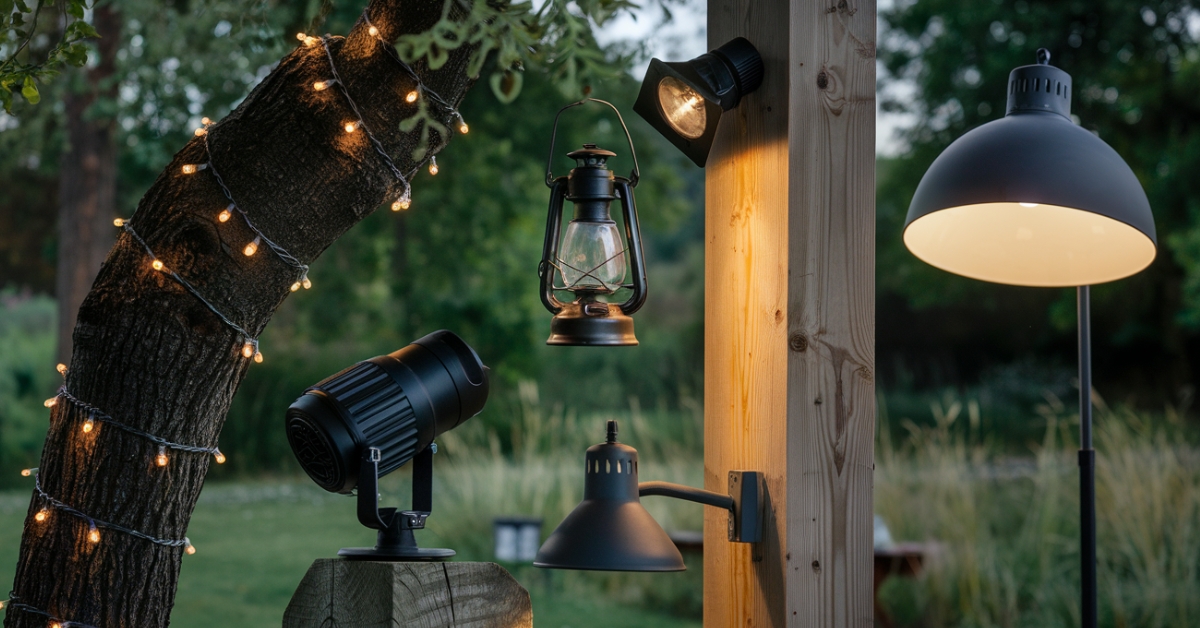
When you've decided to switch to low-energy outdoor lighting, the next step is selecting the right type of fixture for your home. Outdoor lighting comes in various styles and purposes, each designed to suit different areas of your property. Whether you're focused on aesthetics or functionality, there’s a wide variety of fixtures that can enhance your outdoor spaces.
Here are some of the top options for low-energy outdoor lighting.
1. Bollard Light Fixtures
A popular choice in both residential and commercial settings, bollard lights are known for their versatility and ability to provide clear, functional lighting. Typically, bollard lights are used to illuminate pathways, entrances, and driveways. Their durable design ensures safety while creating a scenic atmosphere around your property.
Bollard fixtures come in various styles, including round and square shapes, and can be finished in a variety of modern or traditional designs. For greater energy efficiency, it's best to opt for LED bollard lights, which offer powerful illumination while consuming less power.
2. Lanterns and Wall Light Fixtures
For a subtler look, lanterns and wall lights are a great option. Often used to light up verandas, entryways, or doorways, these lights offer a more understated glow that adds warmth and character to a home’s exterior. Lanterns and wall fixtures can also be used to highlight architectural features or key entry points on your property.
One of the biggest advantages of wall-mounted lights is their durability and wide range of styles, from rustic lanterns to sleek, contemporary designs. Though they don't provide intense illumination, they are perfect for accent or ambient lighting. Install them near entrances to create a welcoming atmosphere while still saving on energy costs.
3. Ground Lights
If you prefer a minimalist and discreet lighting option, ground lights are an excellent choice. These low-profile fixtures are flush with the ground and work well to illuminate pathways, steps, and driveways.
Ground lights are designed to be embedded into surfaces such as concrete or stone, making them ideal for creating a modern, sleek look in your garden or outdoor area. These lights can also be used as step luminaries, providing extra visibility and safety on stairways.
4. Motion Sensor Lighting – Does It Save Energy?
Another fantastic way to lower your energy consumption is by using motion sensor lights. These lights only activate when they detect movement, making them ideal for areas that don’t require constant illumination, such as driveways or garden paths.
Motion sensor lights can drastically reduce energy waste. For even greater efficiency, choose sensors that are designed to work with low-energy lights, such as LED motion sensor fixtures.
When selecting motion sensors, you’ll need to choose between Microwave and PIR (Passive Infrared) sensors. Both options have their advantages, depending on your specific lighting needs.
| Outdoor Lighting Fixture | Best Use | Energy-Efficient Option |
|---|---|---|
| Bollard Lights | Pathways, Entryways | LED Bollard Lights |
| Lanterns & Wall Lights | Entrances, Verandas, Doorways | LED Wall Lights |
| Ground Lights | Pathways, Steps | LED Ground Lights |
| Motion Sensor Lights | Driveways, Garden Paths | LED Motion Sensor Lights |
| Pathway Lights | Walkways, Driveways | LED Pathway Lights |
Microwave vs. PIR Sensors
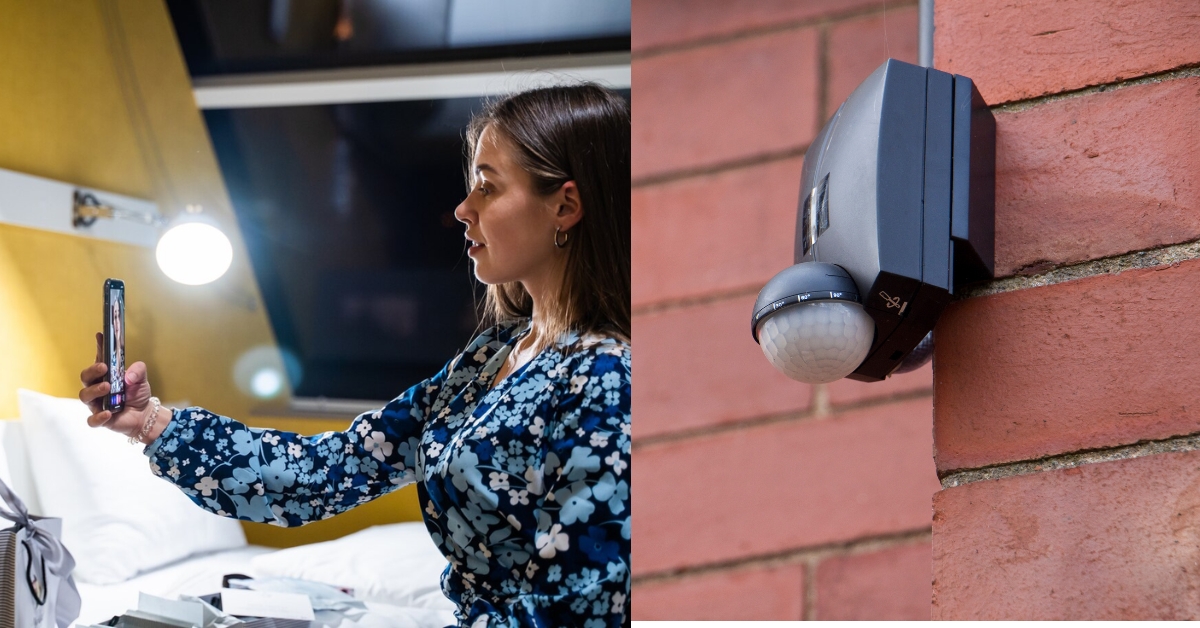
- Microwave Sensors: Microwave motion sensors are extremely functional and don’t require manual control. They are perfect for outdoor lights in hard-to-reach areas or environments where PIR sensors may not work as efficiently, such as high-heat locations. These sensors emit microwave signals that can detect movement through walls and other obstacles, making them highly versatile.
- PIR Sensors: PIR sensors detect heat signals from surrounding objects by measuring changes in the ambient temperature. When a heat source, such as a person or animal, crosses the detection beam, the light turns on. While PIR sensors are commonly used, they are more prone to false triggers due to environmental temperature changes and are less suitable for certain climates.
While both sensors offer energy savings, microwave sensors tend to be more reliable and consistent over time. PIR sensors, on the other hand, are more sensitive to temperature fluctuations and may not be as effective in diverse conditions.
How to Choose the Best Low-Energy Outdoor Lighting
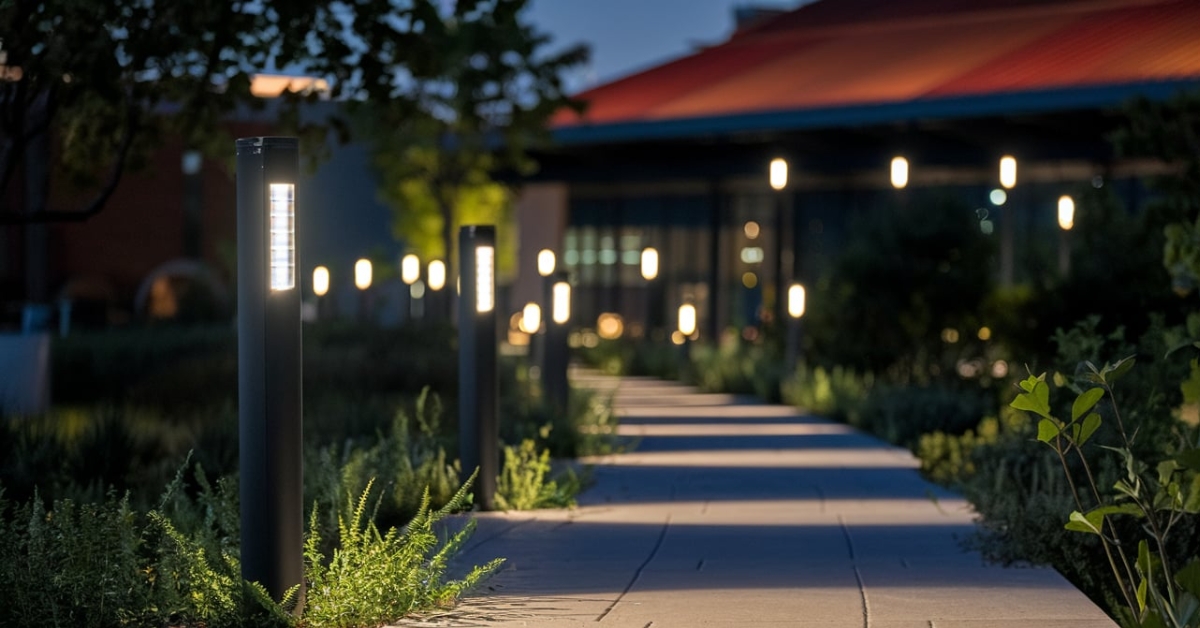
Selecting the perfect outdoor lighting solution for your home involves more than just picking a style you like. You’ll need to consider factors such as cost, brightness, and placement to ensure your lighting is both practical and energy-efficient.
1. Budget and Cost
Budget is always an important consideration when planning any home improvement project, and outdoor lighting is no exception. Low-energy lights, particularly LED options, can sometimes have a higher upfront cost than traditional incandescent bulbs. However, they pay for themselves over time through energy savings and reduced maintenance costs.
Create a clear budget before you start shopping, and remember that investing in energy-efficient fixtures will lead to long-term savings on your electricity bills.
2. Lumen Output
When shopping for outdoor lights, it’s essential to focus on lumen output rather than wattage. Unlike traditional bulbs, the wattage of low-energy lights (like LEDs) doesn’t necessarily indicate how bright the light will be. Lumens are a better measure of brightness, and different areas of your outdoor space may require varying levels of illumination.
For instance, pathways and patios may need moderate lighting (around 100-300 lumens), while driveways and security areas could require much higher levels of brightness (between 700-1300 lumens).
3. Consider the Placement
Proper placement is key to creating an effective and attractive outdoor lighting design. Think about the specific areas you want to highlight, whether it's a front entrance, garden path, or architectural feature.
Not all fixtures are suitable for every location. For example, while wall lights may be perfect for illuminating entrances, they might not provide sufficient lighting for a large driveway. Path lights and ground lights work well for walkways but are not suitable for high-traffic security areas. Make a list of areas that need lighting and choose fixtures based on their functionality in those spaces.
Make Your Property Shine with Meteor Electrical's Luminaries
With so many options for low-energy outdoor lighting, it’s important to choose fixtures that not only fit your design but also help you save on energy costs. At Meteor Electrical, we provide a wide range of high-quality, energy-efficient luminaries to meet all your outdoor lighting needs.
Our LED fixtures offer exceptional brightness, durability, and energy savings, making them the ideal choice for homeowners looking to upgrade their outdoor spaces. Whether you’re interested in bollard lights, wall-mounted lanterns, or motion sensor lights, we have everything you need to enhance your home’s exterior without increasing your energy bills.
Visit Meteor Electrical to browse our selection of low-energy outdoor lighting and find the perfect fixtures for your home. With our expert-backed products, you can enjoy beautifully illuminated outdoor spaces while cutting down on energy consumption.
Make the switch to low-energy outdoor lighting today with Meteor Electrical and experience the benefits of modern, efficient illumination.
FAQs
1. What are the benefits of low-energy outdoor lighting?
Low-energy outdoor lighting reduces electricity costs, has a longer lifespan, and is environmentally friendly. LED fixtures, for example, use up to 90% less energy than traditional bulbs and offer brighter illumination with minimal heat emission.
2. How much energy can I save by switching to LED outdoor lighting?
By switching to LED outdoor lights, you can save up to 90% on energy consumption compared to incandescent or halogen bulbs. The long lifespan of LEDs also means lower replacement and maintenance costs.
3. Are motion sensor lights energy-efficient?
Yes, motion sensor lights save energy by only activating when movement is detected. They prevent unnecessary energy usage, especially in areas like driveways and pathways, where lighting is not needed constantly.
4. Can I install indoor light fixtures outdoors?
Indoor light fixtures are not recommended for outdoor use as they lack the necessary durability to withstand weather conditions. It’s best to opt for specially designed outdoor fixtures that are weatherproof and built for outdoor environments.
5. What is the best type of outdoor lighting for pathways?
For pathways, bollard lights or ground lights are ideal. They provide sufficient illumination for safety and create a pleasant visual effect without consuming a lot of energy, especially when paired with LED bulbs.

